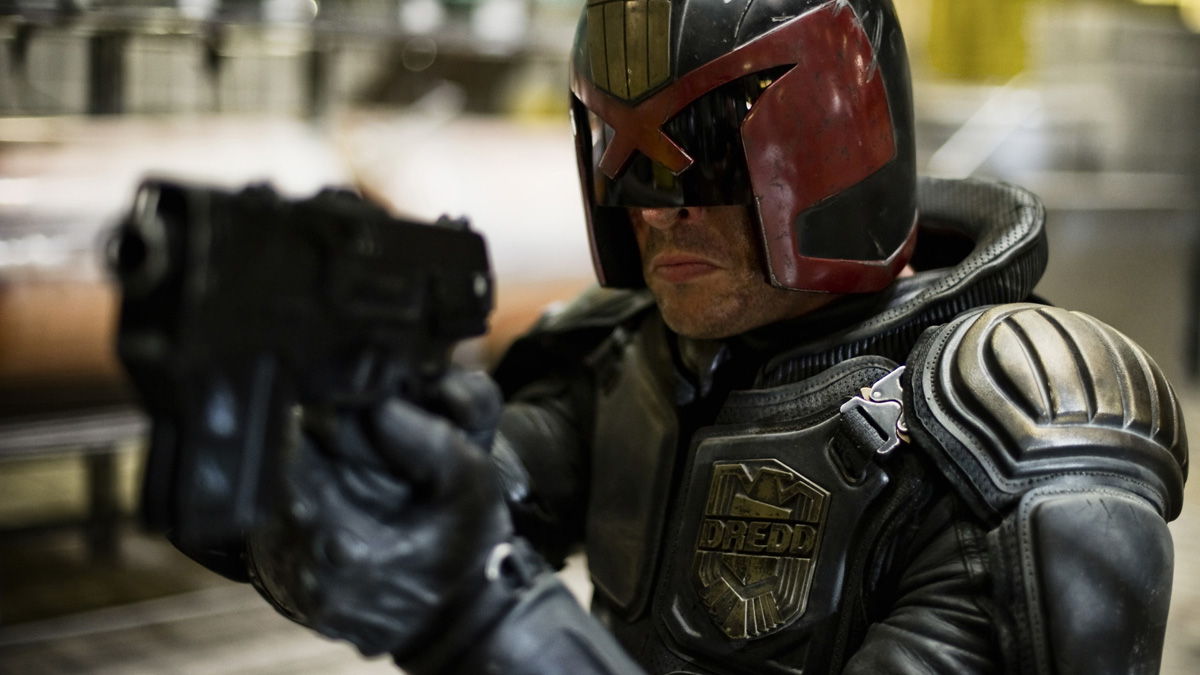“It’s a fucking meatgrinder,” says one soon-to-be meat patty towards the end of Dredd. He is talking about Mega-City One, the dystopian cesspool of violence and despair in which the story is set, but he might as well have been referring to the film itself. At its best, the action scenes are dazzling, the closest that blood spatter will come to approaching the sublime. At its worst, the violence is disturbing and rather sad, an unenjoyable experience for any, save the sadomasochist. And if violence is not exactly your cup of tea, well, unfortunately, Dredd offers little of anything else.
An opening voice-over introduces the post-apocalyptic mega-city to the audience. The 800 million residents of Mega-City One suffer 90 per cent unemployment rates, constant and bloody gang warfare, and an urban hellscape that is surprisingly drab. The only semblance of justice, we are told, is in the form of Judges: a group of men and women tasked with dispensing law in the streets. In the opening scene, the titular Judge Dredd (Karl Urban) does exactly this, charging and convicting a criminal with “attempted murder of a Judge,” then delivering the associated sentence of death in fiery fashion. This is “judge, jury, and executioner,” interpreted in the idiom’s most literal fashion.
Undoubtedly, few people enter such a film expecting more than violence and gore, but given the premise of the story, one cannot help but sense a missed opportunity. Where do the Judges get their legitimacy? Where do the laws that they carry out come from? Where is the state? Is there a state? These are not difficult questions, yet they remain unasked. The comic series on which the film is based explores such political themes in detail; the film is stripped of such cerebral fancy, and what little elements do remain are either diluted or ham-fisted.
Most of the film locks Judge Dredd in a life-and-death struggle with Ma-Ma (Lena Headey), a psychopathic former-prostitute and current gang-and-drug lord. Headey creates a terrifying and enrapturing villain, one who rivals the role she is most famous for—Cersei Lannister of Game of Thrones—in her confident and callous brutality. Urban’s Dredd combines crisp enunciation with a delivery that is bankrupt of emotion. This passes as deadpan during a few of the screenplay’s one-liners (which fail as often than they succeed), but most of the time it adds to the monotony one feels toward the protagonist, a sentiment mostly rooted in the fact that Dredd’s face is perpetually obstructed by a helmet.
The use of the drug Slo-Mo (which allows the user—and the audience—to experience exactly what the name suggests) provides a golden opportunity for innovative action sequences, an opportunity the film takes full advantage of. It’s not every day that one can describe the slow eruption of blood from a bullet exit-wound as being beautiful. At the same time, the film’s utterly senseless violence can be incredibly sad. Ever wanted to see multiple Gatling guns used on the innocent and the poor? Dredd is for you.
The gratuitous 3D glasses, as always, dimmed everything on-screen, and added little perceptible effect outside of the slow-motion shots. The bordering-on-garish lighting would not be out-of-place in a Joel Schumacher Batman film. Drugs, violence, and death are the only means of escape available for the wretched citizens of this world, and after watching Dredd I can sympathize. Hobbes must be rolling in his grave.
Dredd is currently showing at Cineplex Scotiabank Theatres, 977 Ste. Catherine Ouest.










instead of reviewing a bad movie, why not just not mention a bad movie at all?
sometimes the most violent thing you can do is ignore something.
I wish you had taken that to heart a little more last year, EKF